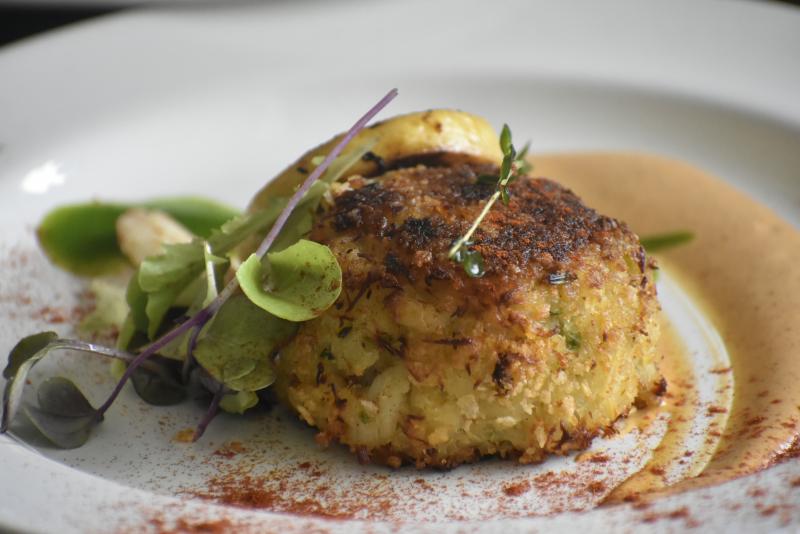
Need some protein variation in your diet? Sick of chicken and hamburgers but still want to keep your meat cheap? Try shrimp, the curly, little delicacy that most people only get at Italian restaurants, in cocktails or Chinese takeout.
Seafood possesses a weird place in the American diet, especially in the Midwest. Those who don’t live by the ocean never consider cooking seafood on the regular, despite its health benefits. Most Midwesterners' experience with seafood is limited to Long John Silvers and McDonald’s Filet-O-Fish as a result.
It doesn't have to be this way, though. There is nothing wrong with getting your seafood frozen (oftentimes, it’s better quality). If you’re new to cooking seafood there is no better place to start than shrimp.
Buying shrimp
Buying shrimp is a pain. To keep things simple, stick to the frozen bags. Shrimp labeled as “fresh” at the deli counter is frozen bag shrimp that has been defrosted. If you plan on deep frying shrimp, buy the largest size available. If not, grab whatever is cheapest and opt for the peeled and de-veined options. Vein-in/shell-on is cheaper, but only marginally so. Pay the extra 30 cents to save time and effort.
Defrosting shrimp
Compared to other animal proteins, defrosting shrimp is quick and easy. Take the amount of shrimp you want and place it in a bowl or sink filled with cold water. Then, let it soak for 20 minutes or until pliable. Because shrimp flesh is delicate, this is the recommended method. It allows for even thawing. Once thawed, drain the water and dab up any excess water with a paper towel. Cook as soon as possible. Never let seafood sit at room temperature for very long before cooking. In general, you do not cook seafood as long as protein like chicken and pork. This shorter cooking time does not kill bacteria as thoroughly.
Note on cooking shrimp
Seafood, especially shrimp, does not take as long to cook as other proteins. Often, it takes only two to three minutes when frying on a medium heat. It takes a minute or less on an extremely high heat, such as used in stir-fry or in a deep-fry.
Recipes:
Kung Pao Shrimp
Ingredients (1 Serving):
6 to 9 medium shrimp
⅓ cup tri-cut onion
⅓ cup diced red bell pepper
¼ cup roasted peanuts
Sauce:
2 tablespoons soy sauce
2 tablespoons water
Pinch of salt (to taste)
1 teaspoon chili-garlic paste
1 teaspoon ground ginger
1 to 2 teaspoon cornstarch (for thicker sauce)
1 teaspoon rice vinegar
Mix all ingredients together and stir before use
Cooking Instructions:
Preheat a highwall skillet (preferably nonstick) to a high heat and add in a small amount of neutral oil (estimated 1 tablespoon). Add onions and bell peppers stirring rapidly with a spatula or tossing with the pan. Cook until the onion is translucent. Add in shrimp and continue tossing till cooked (1-2 minutes). Once cooked, take out the mixture and add sauce to the pan. Simmer it until the sauce is thickened. Add in mixture and peanuts and toss until evenly coated. Serve with white rice or noodles.
Italian Shrimp and Mushroom (Modified Shrimp Scampi)
Ingredients (1 serving):
6 to 9 medium shrimp
2 to 5 sliced mushrooms
1 clove grated garlic
1 teaspoon red pepper flakes
2 tablespoons extra virgin olive oil
1 tablespoon butter
Salt (to taste)
Cooking Instructions:
Preheat a highwall skillet to a medium heat and add butter and olive oil. Wait until butter is dissolved and move oils to mix them. Add in the rest of the ingredients until cooked. If eaten with pasta, add drained pasta directly into the skillet with a small amount of pasta water and stir until the oils have coated the pasta. This recipe is also good served with toasted bread or rice. For a light meal, I recommended eating it with garlic bread.
April 02, 2021 at 10:55AM
https://ift.tt/3mcYBWA
How to cook shrimp to perfection - The Post - The Post - The Post
https://ift.tt/3eNRKhS
shrimp

No comments:
Post a Comment